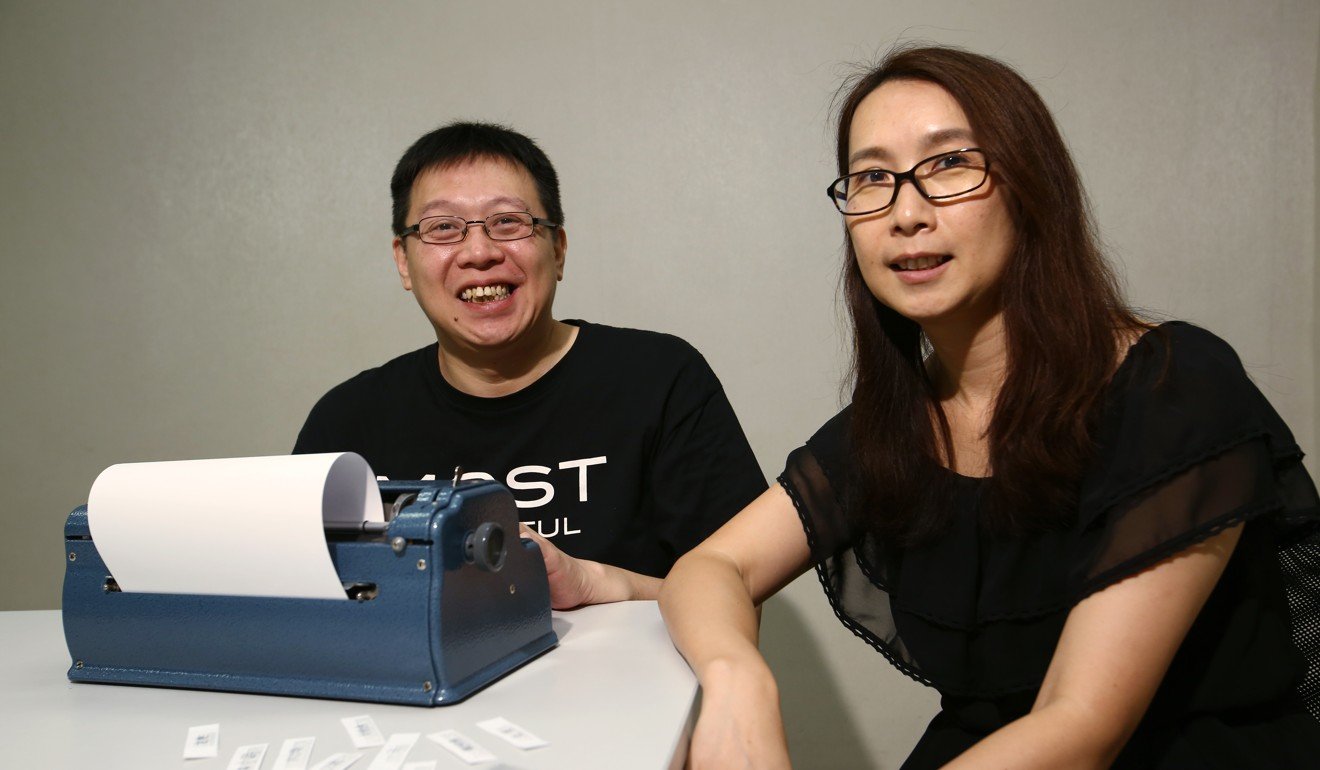
With Braille labels for medicines, two Hongkongers help city’s visually impaired see better days
System relying on ‘dot characters’ offers greater peace of mind to those who must otherwise rely only on what medical staff tell them
Alex Chan Chi-kong moves carefully as he stumbles towards the couch so he can sit down to read a magazine.
The 55-year-old man grips the oversized book, tucking it under his left arm so he can use his cane with his right hand.
While Chan experiences literature no less deeply than people who are sighted, he reads from a ponderous text rendered in Braille.
“The book is so thick because each page only contains a fraction of the reading material of the actual magazine,” Chan says.

To many, it remains a mystery how all the bumps on the pages make sense to the visually impaired. In Chan’s case, he suffers from retinitis pigmentosa, a genetic disorder caused by a loss of cells in the retina, the light sensitive tissue that lines the back of the eye.
“Braille is a system of writing for people with visual impairment,” he explains. “When you learn Braille or transcribe it, it’s like having the key to the connection between the sighted and those with visual impairment.”
The invention originated in the 19th century, created by Louis Braille of France who was blinded by accident. Today more than 100 different Braille codes exist in various languages. The city has a system of its own known as Cantonese Braille, also called “dot characters”.
Over the years, Chan has mastered the art of the six little dots that form the basis of the Braille alphabet. They are arranged in pairs, like those of the number six on a dice.
Why blind smartphone users can count on new app to recognise text and colours
Whether for buttons on lifts, instructions on shampoo bottles or even the lids of beverages, the broad applicability of Braille dots makes it possible for the visually impaired to navigate their daily lives with greater ease.
In a city home to 174,800 people with different levels of visual disabilities, two private clinics recently started placing Braille labels on their disposable medicine pouches to make pills more accessible to patients.
Embossed in different patterns, each symbolises a letter, numeral or punctuation mark. Three sets of information are provided in Braille on the pouches: the medication, its recommended dosage and the frequency of consumption.
The idea was first explored in November last year by Chan and Peggy Ko Pik-kei, the executive director of the Hong Kong Blind Union. Four months later, the two produced their first labels.
Blind teen violinist who commutes 12 hours for lessons in Hong Kong sets bar high
“When it comes to medication, people like us are extra cautious,” Chan says.
“The only instructions we get are when we’re inside the doctor’s office and by the time we get home, we can only rely on our memory as to which medication is for what and when to take them.”
How much can you really tell just by touching the pills?
For people like Chan, no matter how pleasant a visit to a clinic has been, medication management can quickly turn into a nightmare.
“How much can you really tell just by touching the pills?” he asks.
Whether the user needs guidance for an aspirin for aches and pains or for multiple pill regimens, medication management has been an obstacle for many afflicted with vision loss.
“I often turn to my family members when it comes to my medication because I don’t trust myself in identifying medications by memory,” Chan says.
With the new labels, information is available literally at one’s fingertips.
So far, the two have sold 200 of the labels.
“This is just the beginning and we know the process will be long,” Ko says. “We hope that with this initiative, more clinics will consider confronting the challenges faced by those who are visually impaired, and eventually, promote the culture of Braille in the community.”

